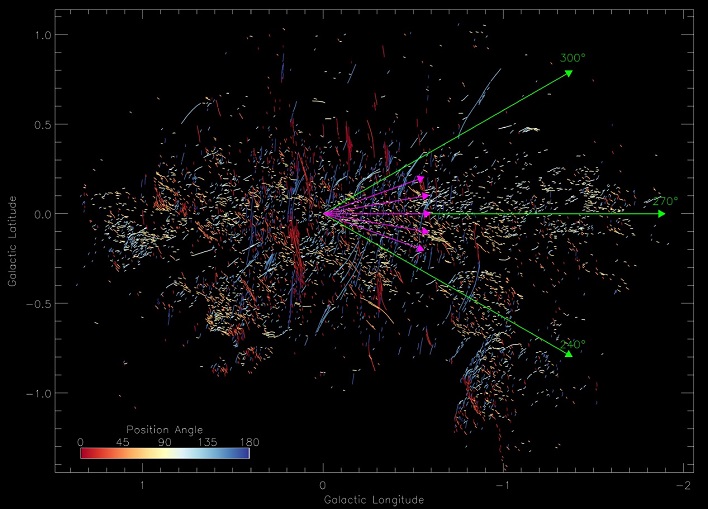Astronomers Are Blown Away By Stunning Discovery Of Milky Way Filaments

The new discovery by an international team of astrophysicists goes hand in hand with a discovery some 40 years ago by Northwestern University's Farhad Yusef-Zadah, who is also the lead author of the current study. In the 1980s, Yusef-Zadah, an expert in radio astronomy and professor of physics and astronomy, discovered immense, one-dimensional filaments hanging vertically near Sagittarius A*. The discovery is of a new population of filaments, however, that are much shorter and lie horizontally, or radially. These radial filaments are believed to be only about 5 to 10 light-years across.
The team relied heavily on the South African Radio Astronomy Observatory's (SARAO) MeerKAT telescope in order to pinpoint the filaments. Yusef-Zadah and the rest of the team used a technique to remove the background and soften the noise from MeerKAT images to isolate the filaments from surrounding structures.
Yusef-Zadah remarked, "The new MeerKAT observations have been a game changer. The advancement of technology and dedicated observing time have given us new information. It's really a technical achievement from radio astronomers."
Erika Hamden, an assistant professor of astronomy at the University of Arizona and not involved in the new study, said the findings related to the black hole are "really exciting" and "demonstrate how beautiful the universe is." She added that studying Sagittarius A* is somewhat difficult, "But this work provides evidence that it was recently ejecting quite a lot of energy into space in the form of a jet and conical outflow."
While the discoveries in the 1980s and the most recent ones share similarities, the researchers don't think they have the exact same traits. The vertical filaments reside perpendicular to the galactic plane, while the horizontal ones are parallel to the plane and point toward the black hole. Also, the vertical filaments surround the nucleus of Sagittarius A*, while the horizontal filaments appear to spread out to one side toward the black hole.
Follow-up research is needed to determine if the jet-driven outflow from the black hole appears on both sides. Typically, a black hole will eject jets symmetrically, so there should be a pair, according to Hamden. Yusef-Zadah agrees, stating his work is "never complete." He concluded, "We always need to make new observations, and continually challenge our ideas, and tighten up our analysis."



